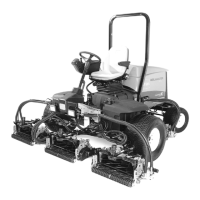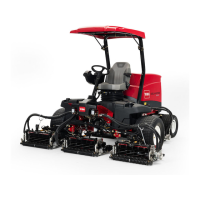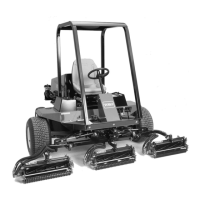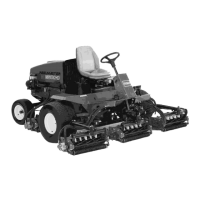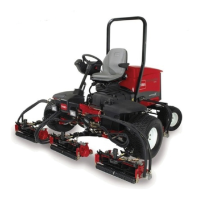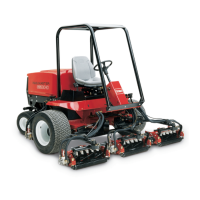Checking Starter Pinion Gap
1. Install 12 volt battery between the “S” terminal and
the starter body (Fig. 29). The pinion should protrude
and stop.
IMPORTANT: Never apply battery voltage to the
star
ter for longer than 10 seconds.
2. Lightly push the pinion back and measure the return
stroke (called pinion gap).
3. If the pinion gap is not within standard range of 0.5 -
2.0 mm (0.02 - 0.08 in.), adjust it by increasing or
decreasing the number of packings on the magnetic
switch. The gap is decreased as the number of packings
increases.
Figure 29
Starter No-Load Test
1. Connect a 12 volt battery, ammeter and voltmeter to High speed and high current draw:
the starter as shown (Fig. 30).
- Poor contact between brushes and commut
ator
2. When terminals “S” a
nd “B” are connected the pinion
should protrude and the starter should run smoothly.
Terminal voltage: 11.5V
Current: 100 A
(broken brush springs, worn brushes, high insulation
between commutator bars).
- High internal resistance (poor connections, dam-
aged leads, dirty commutator or open field circuit).
- Shorted fiel
ds.
Speed: 3000 rpm
No-Load Test Results
Low speed and high current draw:
- High friction (faulty bearings, bent armatur
e shaft).
- Shorted armature.
- Grounded armature o
r fields.
Failure to operate with high current draw:
- Direct ground in terminals or fields.
- “Frozen” bearings.
F
ailure to operate with no current draw:
- Open fiel
d circuit.
Low speed and low current draw:
- Open armature coils - check commutator for badly
burned bars after disassembly.
Figure 30
Reelmaster
®
5100-D Page 5 - 29 Testing

